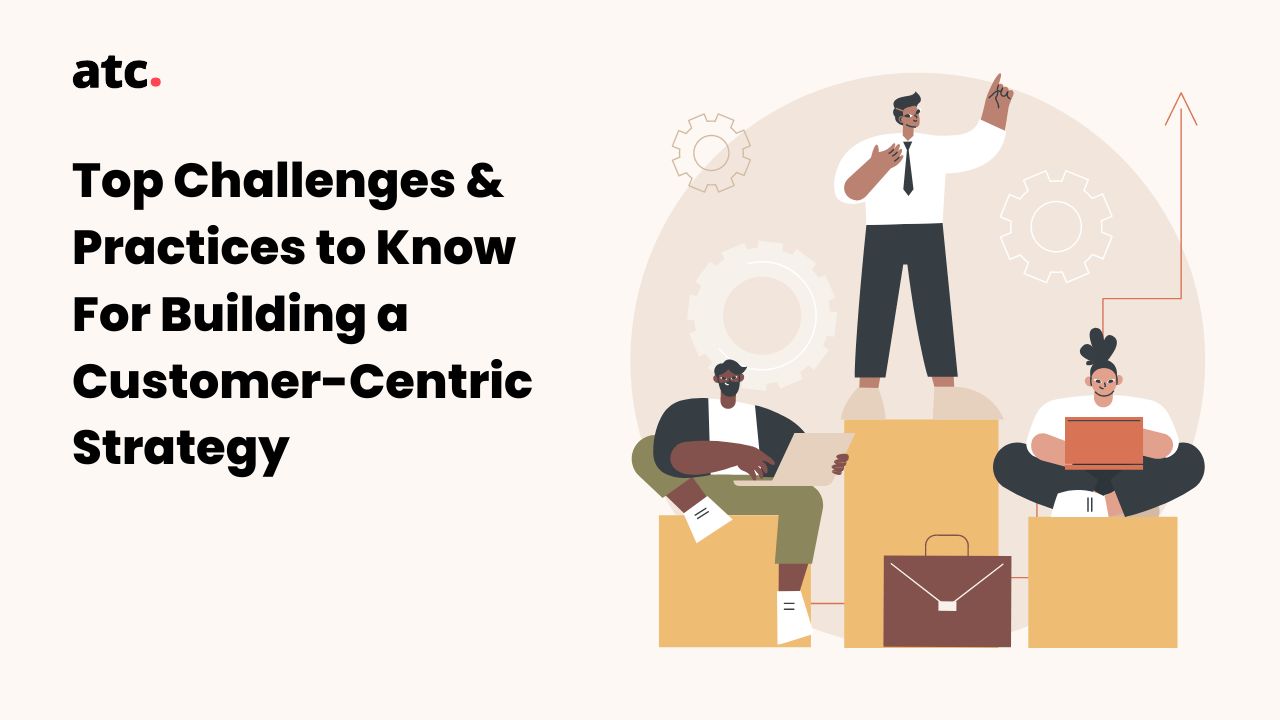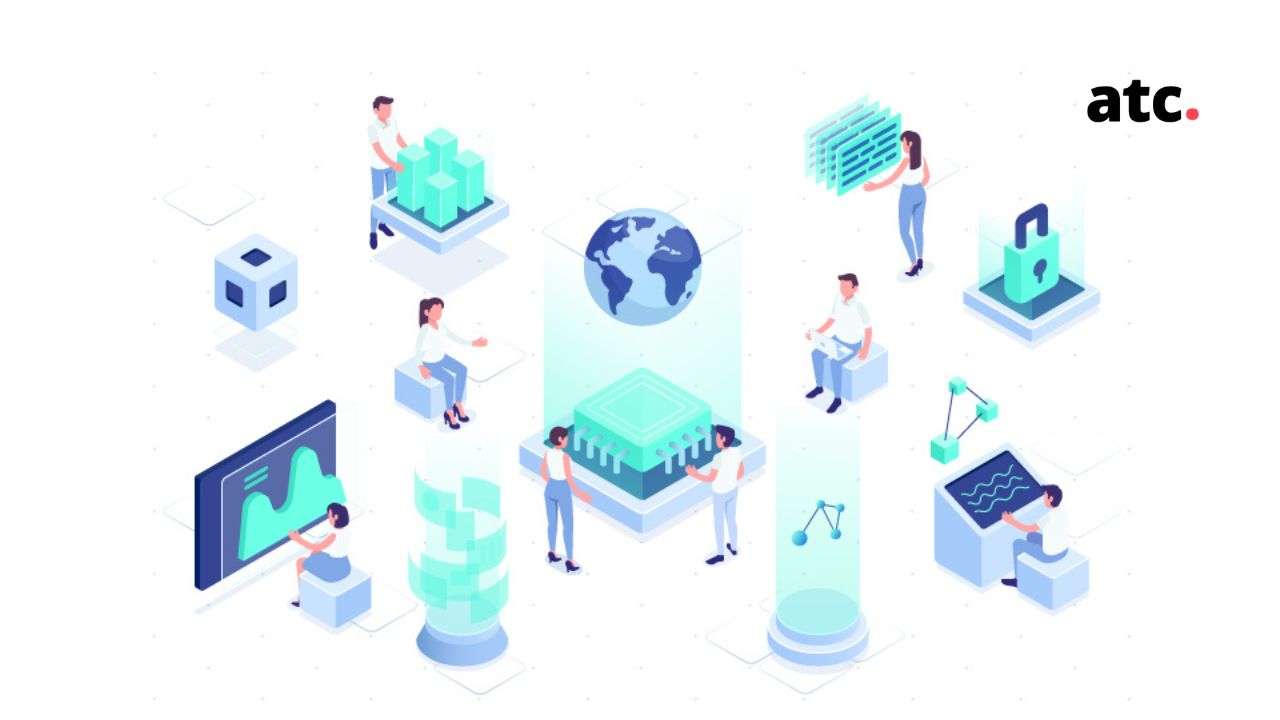Subscribe to the blog
Imagine you are tired after a long day at work and want to enjoy dinner with your family at a good restaurant. But the restaurant had a long wait time, your food order is delayed, and the music is super loud. So even when the food was well prepared, you weren’t able to enjoy the experience.
So what could the restaurant have done to elevate your experience?
- Created a reservation system to eliminate long wait times.
- Have had enough servers and chefs to ensure that the order wasn’t delayed.
- Chosen a music playlist that wasn’t too loud or annoying.
The points above explain what “customer-centric” means.
It is the ability to understand a customer’s needs, expectations, and situations and create strategies to provide an excellent customer experience at every touchpoint. In simpler terms, it involves putting customer needs at the center of all your decisions.
Learn everything you need to know about creating a customer-centric approach, including top challenges, best practices, and real-life examples.
Top Challenges Involved With Adopting a Customer-Centric Strategy
While every business strives to become customer-centric, only a few succeed. That’s because, on its face, it may seem like a simple concept, but it involves thorough research, investment, and commitment. Below, we have listed some of the biggest challenges associated with adopting a customer-centric strategy.
- Limited Understanding of Customers' Needs
One of the biggest challenges in creating a customer-centric organization is gaining a deep understanding of the needs and preferences of customers. A recent survey found that 66% of customers expect businesses to understand their needs and act on them.
While surveys and feedback forms are crucial for gathering customer data, it is barely scratching the surface. It involves moving deeper by conducting interviews, engaging in ongoing conversations, analyzing data across all digital touchpoints, and continuously monitoring changing market trends.
- Delivering a Consistent CX Across All Channels
Studies show that 76% of businesses are increasing investments across various marketing channels. But does this mean that they are also investing in providing a consistent experience? Sadly, no.
With customers increasingly interacting with companies through multiple channels, creating a consistent experience across all touchpoints is vital. Here are the top industry best practices that you can adopt for a consistent experience across channels:
- Create a customer journey map to get a visual representation of all the touchpoints and understand which activities are not in sync.
- Invest in technology and processes that support a consistent and integrated experience. For instance, integrating your web and mobile apps with chatbots to resolve customer issues faster.
- Design consistent messaging across all social media platforms.
- Maintaining Customer Trust and Privacy
Studies show that 87 percent of respondents said they would not do business with a company if they had concerns about its security practices. While customer data can create an opportunity for enterprises to improve consumer engagement and maintain a positive relationship, it is their responsibility to keep consumer data safe.
But wrong data handling and inadequate security measures can lead to customers losing trust.
Companies should implement robust data protection measures, establish clear policies around data use, and communicate these policies to customers in a transparent and easy-to-understand manner.
- Balancing Customer Needs With Business Objectives
Thinking that a customer-centric organization only cares about meeting customer needs and expectations is wrong. It is more about aligning customer needs with business objectives. But most businesses fail to do that and end up hurting their reputation.
Here’s what you can do to align customer needs with business objectives:
- Address customer problems: Instead of launching unrealistic initiatives focus on resolving current issues. If you find that customers are complaining about something and the same problems persist, then focus on how to address them.
- Track metrics: Customer-centric metrics provide data that can help measure the initiative's impact and make informed business decisions to drive growth. Some popular metrics include customer satisfaction rate, customer retention rate, and customer lifetime value.
- Continuously adjust: After monitoring the performance of your initiatives, make adjustments to your strategy to ensure that you are retaining customers and not spending too much.
- Siloed Departments
Most brands think that customer-centricity is the sole responsibility of the marketing department. And this mindset stops them from providing a seamless customer experience across channels.
For instance, a customer may interact with multiple departments, such as sales, customer service, and billing, when making a purchase. If these departments are siloed, with limited communication and coordination, the customer may experience a disjointed experience, as each department provides different information.
Silos in an organization create inefficiencies and cause delays, as information and requests are misaligned and may need to be passed between departments multiple times. It can be frustrating for customers.
In a customer-centric organization, departments unite and promote sharing information, communication, and collaboration to improve customer satisfaction.
Examples of Companies Who Exhibit Customer-Obsessed Behavior
Here are a few examples of companies that are well-known for their customer-centric approach:
- Zappos Winning at Customer Service
With the motto of ‘Delivering Happiness’, Zappos is known for its exceptional customer service and is often cited as a model for other companies to follow. This is because they are constantly working towards finding new ways to elevate the customer experience.
Here’s an example:
“A lot of customers order as late as midnight EST and are surprised when their orders show up on their doorstep eight hours later. This creates a WOW experience, which customers remember for a long time and tell their friends and family about.” - Tony Hsieh, Former CEO of Zappos.
Below are the top ways they have gained customer loyalty:
- 24/7 customer support - Zappos offers 24/7 customer support, allowing customers to contact the company anytime with questions or concerns.
- 365-day return policy - Zappos has a generous 365-day return policy, making it easy and stress-free for customers to return items that don't meet their expectations.
- Knowledgeable representatives - Zappos trains its customer service representatives to be knowledgeable and friendly through boot camps and training programs, allowing them to provide accurate and helpful information to customers.
- Personalized experience - Zappos value personalized interactions over everything else. They offer tours of their headquarters in Las Vegas, provide tailored solutions, and send personalized emails to ensure that customers have the information they need.
- Nike Offering a Holistic Customer Experience Through Interactive Retail Stores
Nike offers a range of personalized products through its online ‘Nike By You’ platform, allowing customers to create their own unique sneakers and apparel. But the retail giant doesn’t stop there. They also offer personalized experiences for customers who like to make in-store purchases.
They have invested in creating interactive retail stores that offer a memorable and engaging shopping experience. These stores feature innovative technology, such as virtual reality displays, faster check-outs, and customizable backdrops that encourage customers to try on products and participate in interactive experiences.
Customer-Centricity Ultimately Affects Bottom Line
Although crafting an excellent customer experience at every touchpoint can be overwhelming, many companies have figured out how to do it correctly all the time and gained a competitive advantage. These companies have a customer focus in everything they do, from how they treat employees to how they serve their customers - because you can no longer operate in a paradigm. You have to move towards becoming multi-dimensional.
If you want to learn how to transform your business and achieve customer success, you can read this guide for better insights.
And if you need experts to provide an integrated CX for your business, you can get in touch with us. We have dedicated individuals who’ve helped hundreds of companies align customer needs with business goals to accelerate their growth.
Prepare yourself for the next wave of transformation with our industry experts! Start today by dropping your project detail here.
Frequently Asked Questions About Customer-Centricity
What is customer-centricity all about?
Customer centricity is a business strategy that focuses on creating a positive customer experience and putting the needs and wants of the customer at the center of all decisions and actions.
What is the difference between being customer-centric and product-centric?
A product-centric approach focuses primarily on the product or service to make it the best it can be. In this approach, the company creates products or services based on expertise and knowledge of what is possible. On the other hand, a customer-centric approach puts the customer at the center of all decision-making.
Which are the most critical customer-centric metrics?
Some critical metrics include customer retention rate, net promoter score, and customer satisfaction (CSAT) score. These metrics provide valuable insights into how well a company is serving its customers and can identify areas for improvement.
Is customer satisfaction and value the same thing?
Customer value refers to the benefits a customer derives from a product or service. Customer satisfaction is the customer's evaluation of a product or service, including how well it meets their expectations.
How do you achieve customer-centricity?
Becoming a customer-centric organization isn’t simply responding to customer feedback. It involves continuous assessment and research about customer wants and needs and immersing yourself in their journey.



